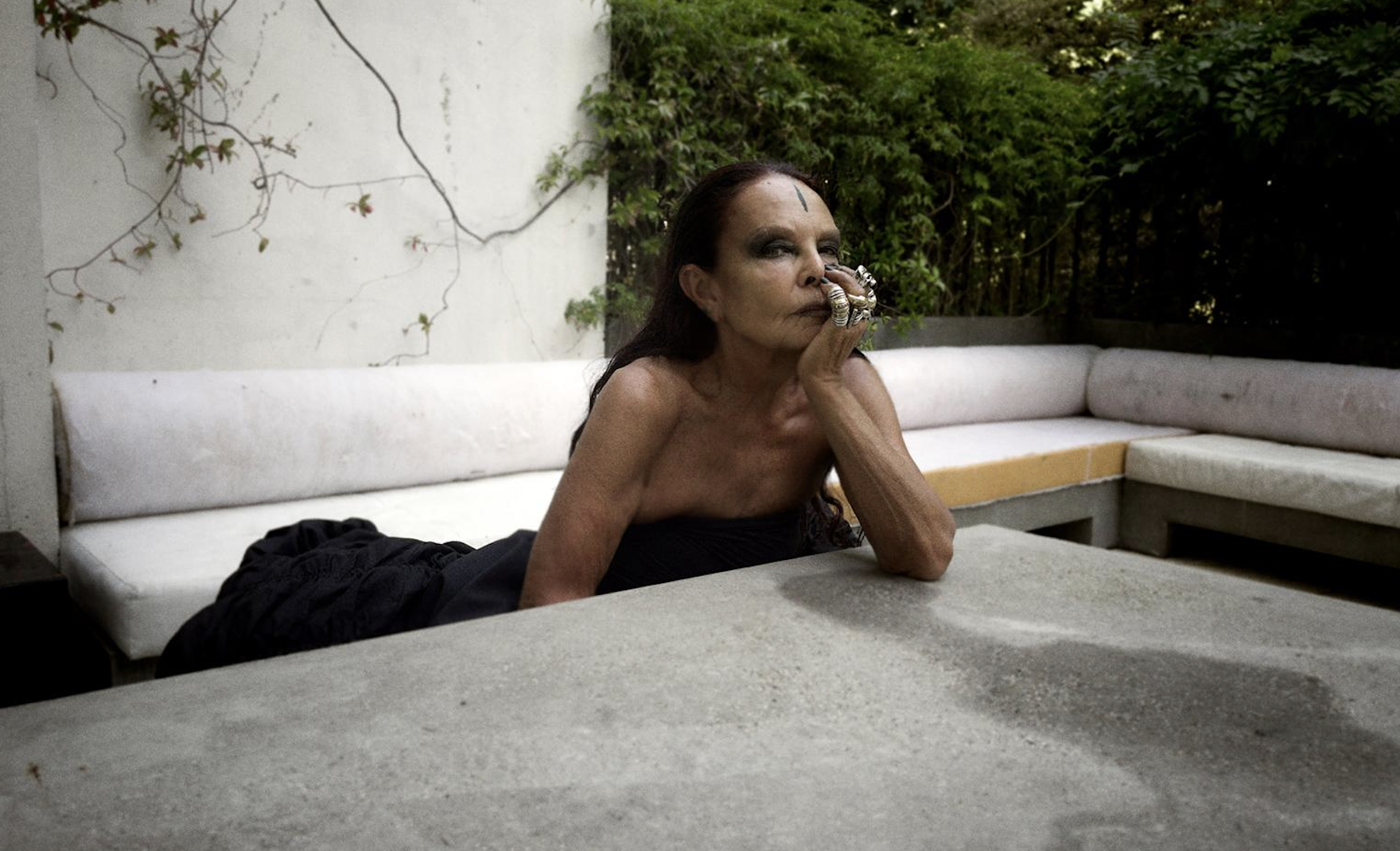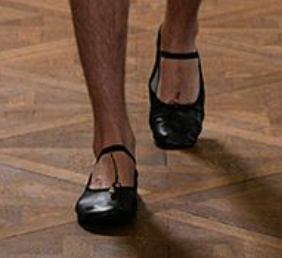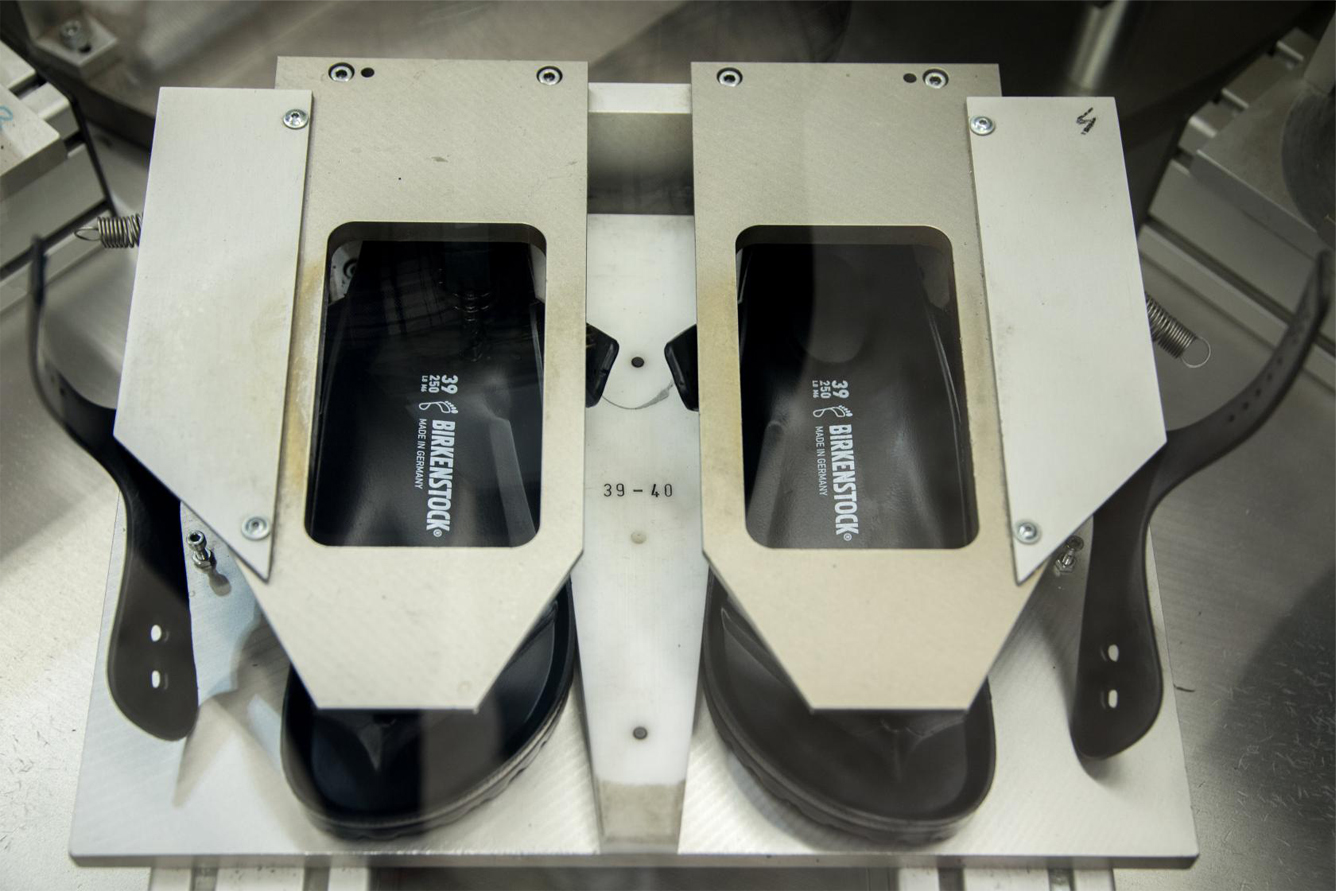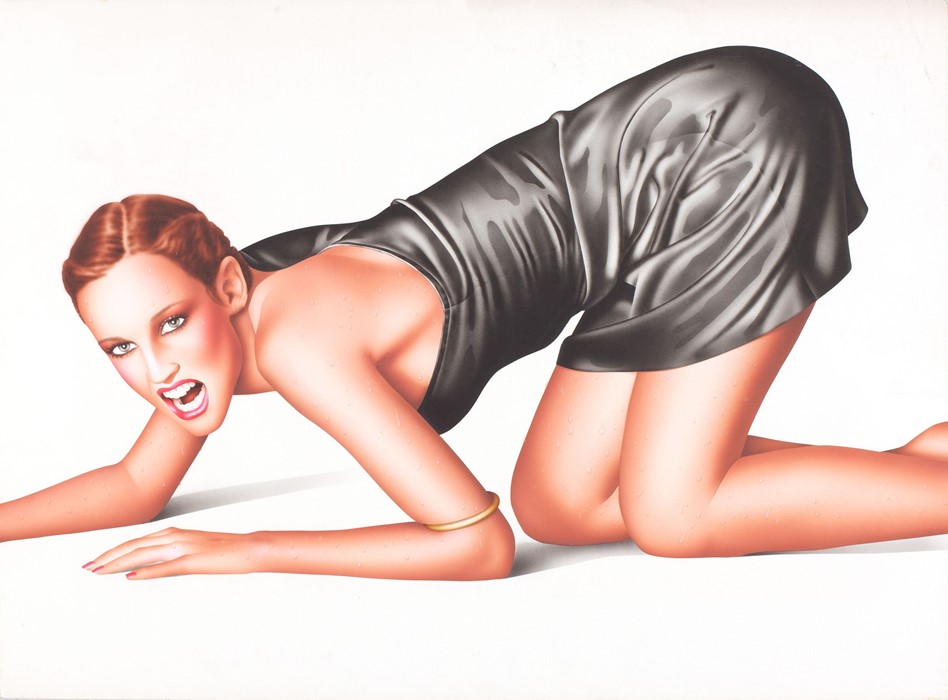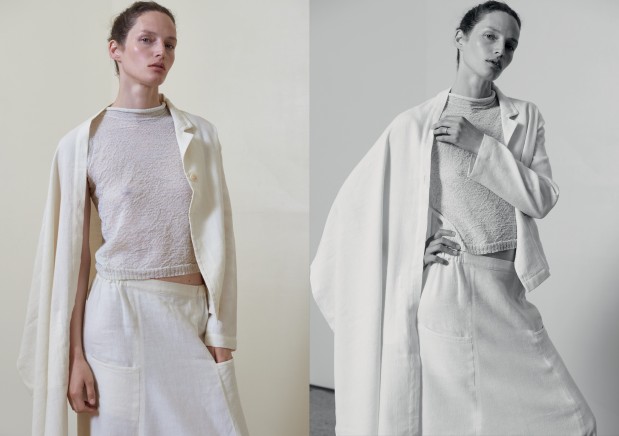2013
Luanda, Angola
Published in Metal Magazine N°28
Out of Angola




What do we know of Latin Africa? Much of Angola’s political history has been documented through international news channels but how much do we know about its cultural history? Africa’s artists, designers, writers and thinkers if not ignored, are habitually overlooked. For so many of us, the Africa we hear about is often wedded to a narrow concept, filled with Masai tribes, famine and poverty. Material on modern Africa is hard to find.
New York may be a thriving metropolis with wealth, international influence and global attention radiating from every street crossing but Angola’s capital city of Luanda has the rhythm of Kuduro, the soul of jazz and the pride of Africa pulsating through its veins. The slow, relentless stream of traffic leads us through a city that is eager for change and its people are full of hope, though amidst the tall car parks, glass office blocks and steel luxury apartments, space for creativity, culture and the arts is scarce.
The professor, author and composer Filipe Zau explains that the breakout for many creative projects came directly after the country found peace. Respect for the arts began to grow and people were more open. “Colonisation gave low self-esteem to society and it didn’t allow people to explore their own culture. Four decades of war would affect a country in being able to recognise their own culture and be stable enough to explore it,” Zau says.
The pitch for Angola? “It’s where Brazil got its sexy from!” laughs musician Coréon Dú. There is a sense of genuine optimism rippling through the streets of the city. “Our optimism is what has been able to get us through the hardship we have gone through. We try to look forward to the positive,” Dú tells. “Angolans like to stand out, no matter how outspoken or demure they are, they want you to notice them, whether it’s something they do or they wear, that’s what fuels the creativity. People want you to be sure you remember them.”
![]()
In 1988, the Angola-born artist Fernando Alvim moved to Belgium and upon arriving in Brussels was shocked at the lack of knowledge people had about his country. “I was expecting to find a very brilliant person on every street corner in Brussels, because that is what we’re told here about Western Europe. What I discovered was that I knew a lot of things about Belgium and Brussels - Tin Tin, Jacques Brel you know these normal things - and the people I met didn’t have a clue about Angola. I just thought, fuck, we’re much more civilised.”
Alvim moved back and forth between Angola and Brussels, organising several art projects in Angola, South Africa and Belgium. “In a way I felt like our country was really an omitted country to most of the world; it had been written out of everything.” He went on to create the first centre for African art in Europe, frustrated by Africa’s exclusion from global recognition. Invited by the former Deputy Minister of Culture to create the triennial for Luanda of arts and culture, Alvim ran a foundation with 3,200 artworks from African artists, which will soon be housed in a purpose built modern art museum in Luanda. “I became so frustrated of people in Europe telling me ‘oh but Africans have no contemporary history’ and I had to explain that that is not true.” All the artefacts and artworks the Africans had from 15 centuries were given to ethnology museums in the war. “The only thing we have and are sure we are is contemporary!”
Lack of support before the millennium meant that local artists had to travel to other countries with the hope of showing their work and Alvim has been at the center of a cultural shift; Angola’s reputation as a cultural capital with triennials and international exhibitions documenting the nation’s heritage and future is growing. At some of the cities’ universities, engineering courses are being cut in order to fulfil demand for more creative courses.
︎LUANDA, NOW
Contemporary Luanda is a building site, full of grit, noise and confidence – a city trying to erase its troubled past. Growing up in Luanda, Tekasala Ma'at Nzinga – one half of fashion label Projecto Mental – would play football and basketball in big public places, places that today have become canvases for car parks and penthouse flats. “There are no playgrounds for our kids, there’s nowhere they can play basketball and football so in that respect, all of this construction is bad. We have to be able to create an identity that we can relate to and respect,” he tells. “We have a past, we have a history, and our own architecture et cetera. Yes, we had a civil war ten years ago but if you knock down those buildings, the city cannot relate to the past because it is all new. It’s like you’re trying to erase what happened and that, I think is not good,” Nzinga says.
The architecture in Luanda right now is a crude mix of late 19th Century palaces, the colonial buildings inspired by Corbusier and Niemeyer built in the 1960s, sat next to a number of high rises that have been constructed within the last 6 years. “After thirty years of war I am cool with everything, I’m not going to make a big thing because I don’t like how a new building looks,” Alvim shrugs. “Actually, the idea of aesthetics is quite a fascist idea. Who decides this? Who decides what is beautiful? You hear the noise outside, the school children playing? I like it. In war times it was not like that. I love it when there is movement. OKAY some buildings are ugly and too close to each other, but these problems are so small. I prefer to talk about water; I prefer to talk about a certain kind of education, health! I have my own taste of course, but finally in the end j'aime de plus en plus les chose ne m'aime pas, I prefer to look at things that I don’t like in order to understand them.”
The way Angolans are dressing to define their personalities is also under revision and Nzinga is trying to understand the country his children will grow up in. “From an African perspective we are losing ourselves as Africans. Not only in how we dress but how we think and feel. I think we should be able to be like other African countries, receive fashion from international cities like London, Paris and whatever and use it to strengthen what we have. Our fashion and the arts have not, until now, been kept effectively and that’s not good.”
Nzinga along with co-founder Shunnoz Fiel are pioneering a new vision of the city and their label Projecto Mental started ten years ago. “As a designer you have to ask people how they relate to their environment and what they consume. Life is dynamic here. It cannot stand still and I think it’s important that we as a people and as a country have a global feel of what is going on, especially in terms of art, behaviour, the way we feel, the way we dress. Our main concern is that we do not lose our identity even in fashion. It’s okay to receive a lot of influence from Asia or Europe but we have to be careful that we do not dilute ourselves too much.” The label’s aim is to be global but from Luanda. “We have decided to communicate Angola through fashion as a means to promote Angolan culture and identity. We make sure that wherever we go, people know that Projecto Mental is an Angolan brand.” European fashion is consumed on a material level every day, and Projecto Mental needs to be symbolically African, but able to be sold materially all over the world.
After five centuries of colonisation the nation decided to keep Portuguese as the official language and the national religion is still Christian with a largely Roman Catholic influence. “You need to have huge capacity to transcend history and be cool with that! Our brain, our generation was obliged to compensate. We experienced 17 years of curfew here, you couldn’t go out between midnight and 6am. We experienced three months in the city without electricity. We went through the Marxist-Leninist system very quickly, and then it was over - and now we don't even think about it anymore.” So what does it mean to be an African? Alvim answers: “it means being in a state of process. Angolans are a new kind – even inside of Africa – we have our own personality. Yes we are looking for our identity but at the same time when someone asks to see our identity cards we don’t like it.”
From the gauche metal and glass skyscrapers dominating the ever changing skyline, to the brightly wax-printed clothes worn daily on the streets of Angola in harmony with faded American jeans and smart European-cut suits, Angolans are trying to build and recreate their national image. “You had the slave trade, and Angolan men in history were not able to choose their concept of beauty, even the concept of being African because we had a very different system with the Portuguese,” Nzinga concludes. “In Africa, we use a lot of colours, even if the production is done in England or Italy, there needs to be African-ness inside the final concept.” Hand woven textiles represent African cultural heritage of the past, but the more vibrant colours and adapted motifs of printed cloths evoke contemporary Africa.
︎IDENTITY, CONFUSION AND COLOUR
Globally, we are used to people decreeing that fashion is a tool to present individuality but how different do any of us really look? Check street style blogs around the world and you would be hard pressed to find someone like Joffre Cardoso - a lecturer in maths, economics and algebra. Wearing a lurid orange, pink and green floral-print blazer, with matching above-the-knee shorts and black floppy bow-tie he speaks about his first visit to Paris where he found himself interrogated by police and later arrested in Le Halles for wearing a brightly coloured ‘rainbow’ suit. “Paris! It’s meant to be the fashion capital of the world!” he says bemused.
Influenced by the Sixties cinema he watched and adored growing up, Cardoso began experimenting with dress in 1997. “People used to criticise me a lot because I was different from them, I have suffered a lot of criticism but because of Projecto Mental people like how I dress now. Even when I was studying in Portugal at University of Porto, people would look at me and get excited about the way I was dressing, the other students when I came into the gates of the school would scream. I dress for myself, I don’t care what people think about me, I’m not dressing for compliments, or for attention,” he frowns.
It feels as though the world’s fashion capitals dress to a uniform, desperate to fit in yet Nzinga, Cardoso and their peers are embracing a vision inspired by the rest of the world, but proudly grounded in Angola. “We like colour here!” Cardoso cheers, “I like colourful clothes because I feel that when you are wearing colourful clothes, you feel younger, when you get something dark it is not so good. Now people are starting to recognise the way I dress and they are open to more things, but really I don’t care about this – I’m not afraid of being the first.”
Being the first is also not a problem for musician Coréon Dú, part of a new wave of young Angolans returning to Luanda after being educated abroad. “There are some people who have left Angola and have chosen not to see the positive changes that are happening here, but a lot of people are coming back” he tells, fresh from releasing his debut album The Coréon Experiment. Dú ‘s musical style fuses Angolan Kuduro music with western influences. “In the last ten years, local music has become much more popular than foreign music. People are becoming more concerned about promoting local culture and I think that is what’s going to lead to more growth.” This is not a result of people looking to reconnect with their roots, as Dú explains. “People are just more accepting of what is happening here. Before we were in a situation where our country wasn’t recognised as an independent country and people did feel that they needed to affirm themselves in the world.”
Dú spent 16 years of his life outside of Angola but has always felt very Angolan growing up in the suburbs in Northern Virginia. “You could not see anything for miles where I lived. I went to school in DC so I had an urban setting and I was used to the urban setting as I was coming from Luanda and I had lived in Lisbon before that. People really had no idea where I was from and would totally not recognise Angola.”
“I get very upset when people would say I didn’t look African and I didn’t sound African because people were very used to the National Geographic, Shaka Zulu vision of what Africa is and because I didn’t sound like that, people would not recognise my heritage. I was proud to correct them.” The heritage Dú talks of is heavily grounded with music and the soul of the country, as filmmaker Mário Bastos concurs. “It’s funny because we copy so much from outside but when it comes to music, it is just local music. It’s amazing how much Angolan music you listen to here.”
Bastos was born and raised in Luanda and moved to New York at the age of 16 with the dream of becoming a filmmaker. In his first year in the city he attended E.F. International Language School and in 2006 graduated from the Directing Program at New York Film Academy with a successful award winning short film titled Kiari. Later he went on to study Motion Picture & Television Program at Academy of Art University in San Francisco. “To be a good director you should know about everything, so that you make better decisions. So I know a little bit about every single job on a movie set and that helped me out when I got back to Angola because it doesn’t matter where you work, you have to be able to do everything here!”
Bastos is currently finishing postproduction on Triangle – a documentary set in Luanda, Rio and Lisbon. Triangle follows a Portuguese woman who, despite living in Angola, is totally unaware of Angolan society. She only socialises in places that are populated by Portuguese people. Bastos also follows an Angolan man who has moved to Rio and is representative of the dynamics of new immigration and lastly, a Brazilian woman who is working in Portugal as an anthropologist but faces prejudice as an immigrant every day. Honing in on Luanda’s on-screen identity is just as much of a challenge as defining its off-screen persona. “Most of the time when we were shooting the Portuguese woman here in bars and things, it didn’t even look like she was in Luanda. It was our challenge to make Luanda look like Luanda.”
Sitting in an Italian restaurant, overlooking the glittering skyline across the bay in Luanda, Bastos is forced to remember how much the landscape has changed since his return. The places Bastos used to love growing up, have also become building sites. “You have to want to be here,” he tells. “Some people came back but I think it’s because the main focus of the country is not art, it’s not creating photographers or film makers, its more engineers, business people, lawyers but we should also be concerned about the arts. Culture is very, very important, you can be whoever you want to be, but without culture it is impossible.”
The director of International Festival of Theatre and Arts of Luanda, José Mena Abrantes is a stalwart of curating and encouraging culture. With his work as press secretary, a poet, fiction writer and playwright, he has published fourteen plays and has written 31. In the same way as Bastos, Dú and Alvim, Abrantes moved back to Luanda at the age of thirty having lived in Lisbon and West Germany for four years. His goal upon his return was to make plays and theatre, but he found there was little he could go on so he began making plays from traditional stories of Angola. A cultural history lesson if you will, Abrantes’s work looked to bring back situations of Angolan history but not in a political way, “the Portuguese wrote all of the Angolan history and they had their own point of view and when we’ve tried to interpret these situations, we’ve discovered new things.”
Perhaps now, Abrantes is best known to Luanda’s burgeoning creative youths for his pioneering work setting up Elinga Teatro, a late 19th century building in the heart of the city, which after 24 years is soon to be unceremoniously knocked down in favour of a car park. Home to Luanda’s creative community, it’s in the evenings that a spirited crowd gather at the rooftop bar to hear musicians and DJ’s from around the world play music. “I think it’s the most dynamic cultural centre of the city,” Abrantes smiles. During the unrest, Elinga was the only place where you could find every thing, every day. “All kinds of people, painters, writers, actors, musicians, everybody was here.”
The creative community working in Luanda is collectively concerned about the way the city is building up around them and erasing space for the arts. Although there are 150 theatre groups in Luanda, for example, few people have ever heard of them. As Abrantes explains, “There is one theatre and we have a stage here but nothing more. So these groups exist but they will remain very unknown as they have no place to show what they are making. There are some promises to create some places in the local suburbs outdoors, but it’s a slow process.”










